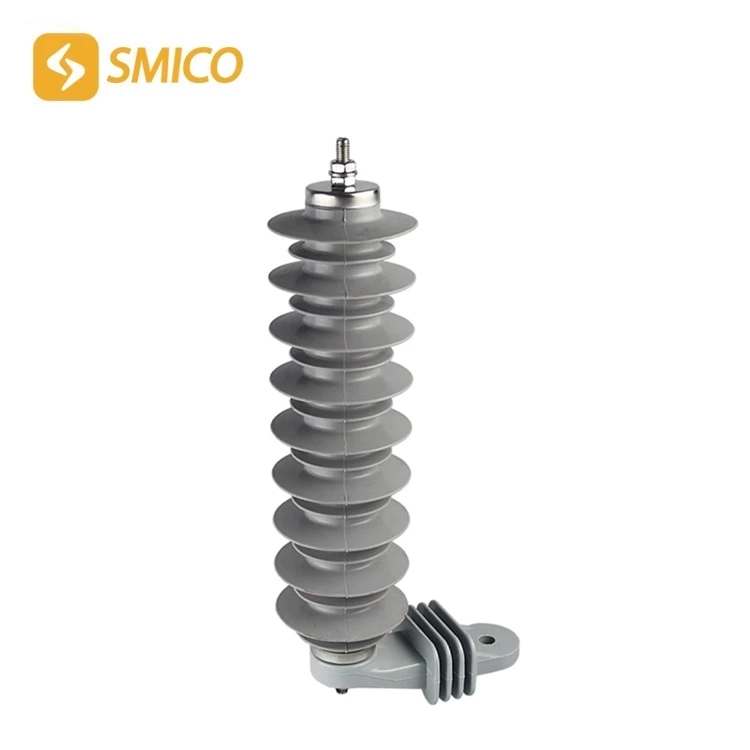Analyze The Misunderstandings In Lightning Arrester Selection To Avoid Unnecessary Losses!
In modern communications, power, rail transit and new energy systems (such as photovoltaics and wind power), DC surge protection is crucial. Since surges caused by lightning or power grid fluctuations may cause equipment damage and system paralysis, the reasonable selection of 12kv surge arrester becomes the key to ensuring equipment safety. However, many projects have misunderstandings in the selection of lightning protection, resulting in lightning protection failure, and even equipment damage and economic losses. This article will analyze common misunderstandings and provide a correct selection guide to help you avoid risks.
Misunderstanding 1: Ignoring the difference between DC and AC 132 kv lightning arrester
1. Common mistakes:
Mistakenly believe that 132kv lightning arrester can be directly used in DC systems.
Using ordinary AC SPD to protect DC equipment leads to lightning protection failure and even equipment damage.
2. Correct approach:
Choose a dedicated 132kv surge arrester to ensure that it can adapt to the characteristics of the DC system.
Pay attention to the working voltage and discharge capacity. DC SPD usually requires a higher withstand voltage to prevent false triggering or breakdown.
3. Case analysis:
In photovoltaic systems, some projects use AC SPD to protect DC busbars. It turns out that SPD cannot effectively discharge surges, and even suffers thermal damage due to DC arcing during long-term operation. Therefore, it is important to select 15 kv surge arrester optimized for DC characteristics.
Misunderstanding 2: Improper selection of 22 kv lightning arrester nominal voltage
1. Common mistakes:
Only considering the rated voltage, while ignoring the overvoltage of the system, leads to premature aging or failure of the SPD.
Selecting an SPD with insufficient withstand voltage is prone to breakdown or short circuit due to excessive voltage.
2. Correct approach:
The continuous working voltage (Uc) of the SPD should be slightly higher than the maximum working voltage of the system to avoid accelerated aging of the SPD due to long-term mild overvoltage.
High-voltage DC systems such as photovoltaics and energy storage should consider the operating voltage fluctuation range to ensure that the SPD can effectively protect the equipment.
3. Recommended selection examples:
For photovoltaic DC busbar (PV system), if the system voltage is 1000V DC, an SPD with Uc ≥ 1100V DC should be selected.
When the electric vehicle charging pile (DC charging system) is powered by 750V DC, an SPD with Uc ≥ 800V DC should be selected.
Misconception 3: Failure to consider discharge capacity and protection level
1. Common mistakes:
Only focus on the maximum discharge current (Imax) of the SPD, while ignoring the ability of continuous lightning strikes or multiple surges.
Selecting an SPD with only Imax protection capability will cause the SPD to fail quickly when there are more lightning strikes.
2. Correct approach:
Select a suitable lightning protection level (such as Type 1, Type 2, Type 3) to ensure that the SPD can withstand surges of different intensities.
For high thunderstorm areas, it is preferred to select SPDs with large energy absorption capacity, such as Type 1 SPDs with Iimp ≥ 12.5kA (10/350μs).
3. Recommended selection guide:
Misunderstanding 4: Ignoring the impact of response time (tA) on equipment protection
1. Common mistakes:
Thinking that SPD is sufficient as long as it can withstand large currents, ignoring its response speed.
Selecting SPDs with slow response time results in surges not being discharged in time, and the equipment is still damaged.
2. Correct approach:
Selecting SPDs with short response time (tA), usually requiring tA ≤ 25ns, to ensure rapid discharge of lightning current and reduce the impact on the equipment.
For precision electronic equipment (such as data centers and communication base stations), it is recommended to select SPDs with tA ≤ 25ns to improve the protection effect.
Misunderstanding 5: Ignoring grounding and installation specifications
1. Common mistakes:
The grounding resistance of SPD is too large, resulting in the inability to quickly discharge lightning current.
The installation distance is too long, resulting in a significant decrease in the protection effect of SPD.
2. Correct approach:
Grounding resistance ≤ 10Ω, preferably ≤ 4Ω. An independent grounding system can be used in areas with frequent thunderstorms.
The connection line from SPD to the device should be as short as possible to avoid surges forming voltage drops in long wires that affect the protection effect.
Use equipotential connection to ensure that all lightning protection devices are grounded to reduce damage caused by potential differences.
3. Case analysis: A communication base station clearly installed SPD, but the equipment was still damaged. Inspection found that the grounding resistance of SPD was as high as 100Ω, resulting in the inability to quickly discharge lightning current and the equipment was still subjected to high voltage shock. After optimizing the grounding, the lightning protection effect was significantly improved.
In the selection of DC lightning protection, it is particularly important to avoid the above misunderstandings. Correct selection and installation of 220 kv lightning arrester can effectively avoid equipment damage, improve system reliability, and reduce unnecessary economic losses. I hope these misunderstandings can help you make the right decision and ensure the safe and stable operation of your DC system!

